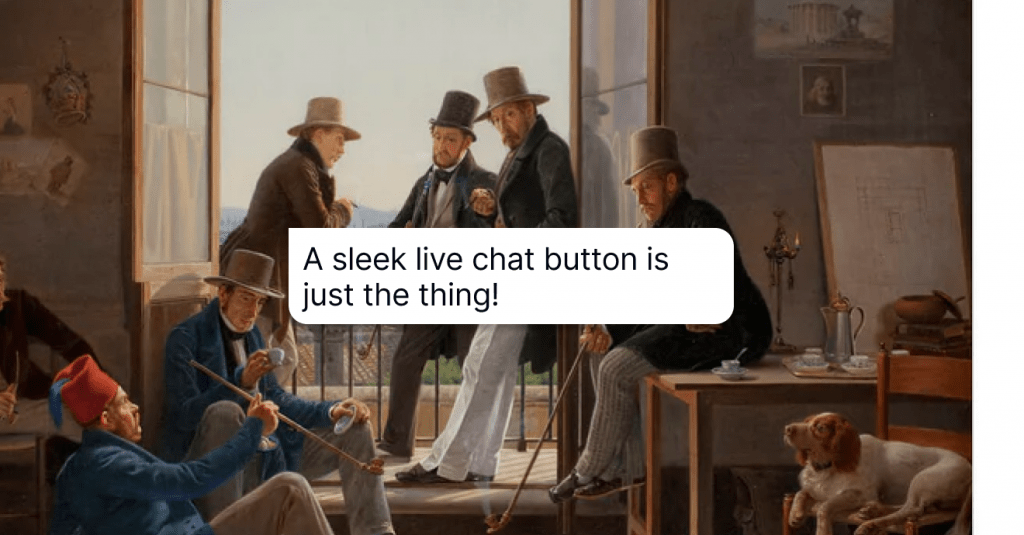Customer Service Training Ideas, Activities & Exercises
Customer service has evolved into a true science, and, like any other science, it requires training. Check out our top customer service training materials.
Written by Daniil Kopilevych

Customer service has evolved into a true science, and, like any other science, it requires training. On the other hand, products have become sophisticated and customers have become demanding – you just cannot handle a customer service job without somebody guiding and training you.
Ideally, a company that has a customer service department should start training its agents from day one. By training, we do not mean only the technical side of the job – although, it is an important part of each new employee onboarding – but also more abstract concepts that lie in the area of company culture.
Which goals can you achieve with customer service training? They are quite numerous:
- Introduce the employee to the company. The customer service training activities should include information about the company’s history, values, goals, and culture. If you expect people to represent your business, they should know what it is and how it developed.
- Explain the agent’s job responsibilities. The training should give a clear idea of what is expected of an employee and what their working routine will be like. However, do not paint an excessively bright picture. Everyone knows that customer service is hard work, and yours is no exception. Be realistic.
- Let the agents get familiar with the hard- and software that they will be using every day. Show how everything works and make sure to include a lot of practical exercises.
- Describe the system of customer service KPIs and performance metrics that you use, explain their measurement principles and effect, and show the ways to improve them. Your agents should know what to aim at.
We at HelpCrunch see the importance of customer service training and train our reps as soon as they join us. The customer service training activities and ideas we have are based on our own software but do not hesitate to adopt solutions from other companies or experts.
Today, we decided to share some of the customer service training materials that we consider the best in their league. We tried to evaluate their effectiveness and estimate their implementation cost. Well, read on and see for yourself.
Why is customer service training important?
Trained professionals do their job well. This is true for any industry, not only customer service.
However, the benefits of customer service training for employees are much wider:
- Higher personnel engagement and motivation
- Higher agents’ confidence
- Better brand awareness
- Higher customer satisfaction
- More positive customer feedback
- Increased viral marketing opportunities
Proper training has a positive effect on all areas of your business – from the working environment to sales figures. Let’s see how you can organize training for your reps and which customer service training materials you can use.
Customer service training process
Like every process, the organization of customer service training activities includes preparation, conducting and analysis of the results. In our case, we can interpret these stages as follows:
1. Define the customer service KPIs that you need to improve or achieve.
This will help you outline the training activities focusing on achieving the KPIs you found.
2. Identify the customer service skills that you need to train.
Each company has its own specifics; moreover, you may have several departments in your customer service. Sales and complaints handling might need different skills. Take some time to outline the required skill set.
3. Conduct the customer service training.
Based on the skill set you identified and using the appropriate customer service materials, you can prepare and conduct training that nails it.
4. Measure results and repeat if necessary.
Use the customer service KPIs to evaluate your reps’ progress and plan follow-up training sessions on the subjects that require improvement.
Customer service training materials
Let’s see what you can use in your training.
1. Customer service training ideas & tips
Do a personality test
This activity may be the first in your series of customer training exercises. Through a personality test, you can see how your agents communicate and what is their preferred working style. While a personality test is not a customer training activity in its pure sense, it helps to better understand the personality traits of your service reps and assign tasks more effectively.
There are many personality tests out there, and you can choose the one – or several – that fits your purposes best. One of the most popular is the Myers-Briggs Type Indicator which is more than half a century old but is still valid.
During the test, people complete a questionnaire providing the answers that are then used to identify each person as belonging to a certain psychological type. There are 16 of them, but to keep the long story short, let’s just say the MBTI helps to determine whether a person is an extrovert or introvert, guided by feeling or thinking, relies on senses or intuition. Sounds useful in a customer service job, doesn’t it?
Cost: free
Conduct a product knowledge session
This should rank as a must-have in any training activity for customer service. Without knowing the product, your agents will not be able to provide quality customer service. Invest some time and effort to prepare a product knowledge routine and include it in your service training materials.
Depending on your business area and the product as such, the format and content of your product knowledge activities may vary greatly – from real or virtual tours to software demos and practical customer service training exercises. Try to sell your product to your service reps showcasing its advantages – and they will be able to explain them to clients from their first-hand experience.
A good customer service training idea is to finish a product knowledge course with a test that, again, can have different formats – a quiz, a task, a request to prepare a product demo. Anything that helps your agents organize their knowledge of your product will do.
Cost: may vary depending on the type of product and the chosen presentation format. Even if there are costs related to the preparation of the product knowledge program, they become an investment in your own business.
2. Customer service training games & exercises
We are all grown-up people here, but even grown-up people learn better when knowledge is delivered in the form of a game or a funny exercise. The skills can be trained through many customer service training activities that relax the atmosphere and give your agents a chance to reboot a bit while still learning.
Most customer service games for training require little or no special equipment or materials, thus, their cost is next to nothing.
Role-playing exercises
Role-playing is included in most customer service training activities. Have one of your agents step “into a customer’s shoes” and act the part. Have another agent respond to the situation. Afterward, you can offer the entire group to analyze how the communication went, what was brilliant, and what could be improved.
Customer service training scenarios are literally endless. An angry customer, a distracted customer, an “expert” customer, a polite but scrupulous customer – we have them all and much more. Play different scenarios to see which techniques work best in each particular case. Of course, let all your students be both a “customer” and a “rep”.
Never say “never”
Sometimes customers want impossible things. The true art of client communication is to refuse without openly saying “no” or “we can’t”. This customer service training exercise can help your agents turn a negative scenario into a positive one and leave the customer with options rather than close the door in their face.
Ask your group to think of a couple of requests, both realistic and downright impossible. Then, ask each student to voice their request to a colleague who has to refuse without saying “no” even once. The exercise teaches you to say what you can do instead of what you cannot do.
Instead of saying “No, we do not have a free trial” say “We have a very flexible starter package”. Instead of saying “We can’t give you a discount on this” say “Let’s review your requirements for the service and see if another pricing plan may be suitable for you”. You get the idea.
Give context
Another customer service training exercise is asking one of your agents a question that will seem to come “out of the blue”: “Can you stand very hot weather?”. Let the person answer but do not provide any other details.
Then ask another person the same question but provide a wider context: “We are opening a new branch in a tropical country. It is warm there all year round and summers can get really hot. We are looking for customer service agents to offer a transfer to that branch and want to make sure that they are comfortable with it. Can you stand very hot weather?”
You will notice that people are much more willing to provide information when they know why it is needed. Your customers feel the same. Thus, try to always give context when you ask something. If you want to ask how many users of the product the company has, explain first that each pricing plan is intended for a certain number of users, and that may be the reason why the application does not work for a new user.
3. Customer service software
Your customer service must use a software solution to communicate with customers and monitor the performance. Depending on your business specifics, you may have several tools, each for a particular function, or an all-in-one solution, like HelpCrunch, that serves multiple purposes and has all the features needed.
Cost: from $15/mo/team member
In any case, you will need to teach your reps effectively. Set up practical customer service training exercises that will allow your personnel to feel how the tool works. Let them talk to each other in a live chat, practice composing various automated messages from templates, explore the knowledge base. Such practice will help your agents in real-life customer communications when they will be using the tool by “muscle memory” giving their full attention to the customer and their problem.
On a final note
Customer service training ideas, certainly, have their cost in both the financial and resource sense. You need to engage experts, prepare the training materials, set up rooms and equipment and allocate trainers to conduct the courses. However, the customer service training costs are, rather, an investment. You are investing in your service agents’ professionalism which leads to confidence which, in its turn leads to loyalty and dedication. And you can’t have too many of those, can you?





